
 |
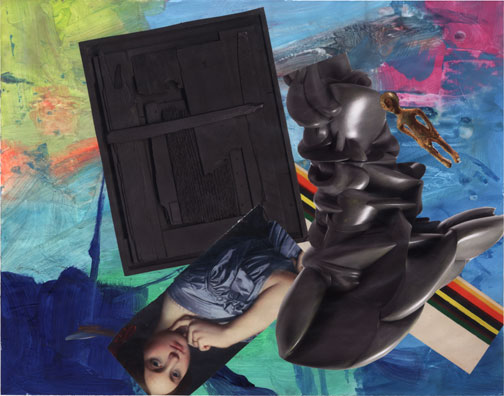
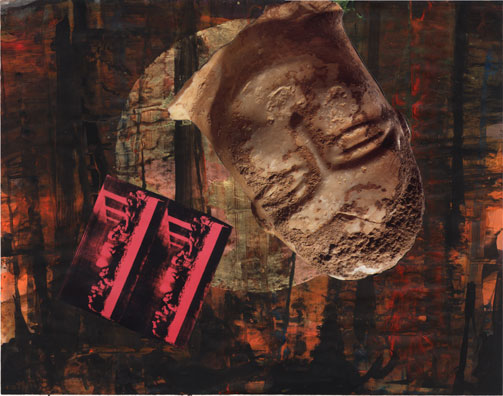
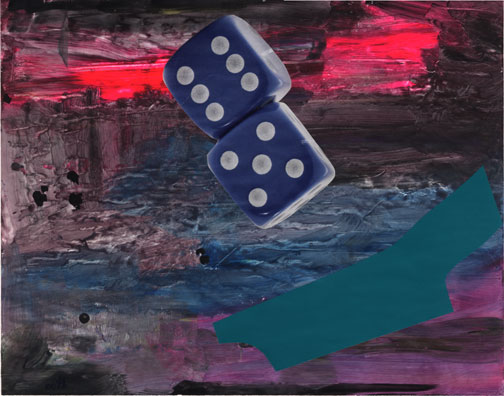
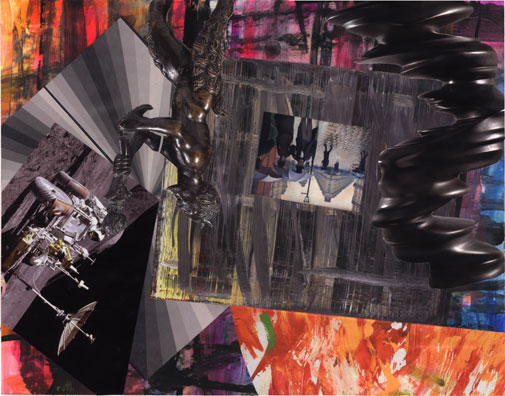
Two series, Gestures and Focail Farraige, by Sigrid Wendel are currently on view at Adjacent to Life’s home in Ninth Street Espresso.
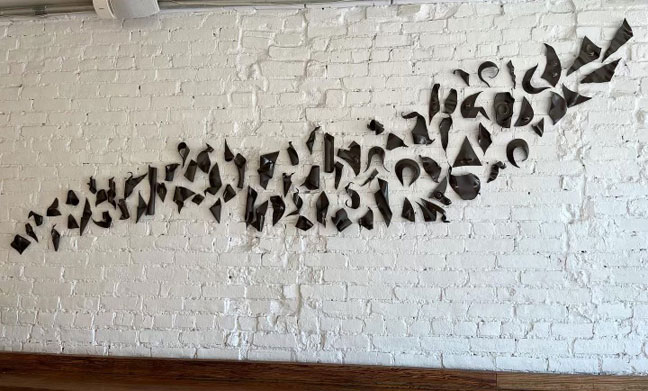
Walk in and you’re greeted by a graceful wave of fragmented pieces of clay, each captured in a different state of motion. As they appear to glide across the wall, collectively forming a larger abstract shape, it is reminiscent of a flock of birds diving and curving in unison or leaves gathered up and tumbled by the wind. This is her Gestures series. Started during the pandemic, these pieces twist, unfold, curl, open and close, in much the same way many of our lives have during this time. But the idea is bigger than this moment, it explores the elasticity of our sense of self.
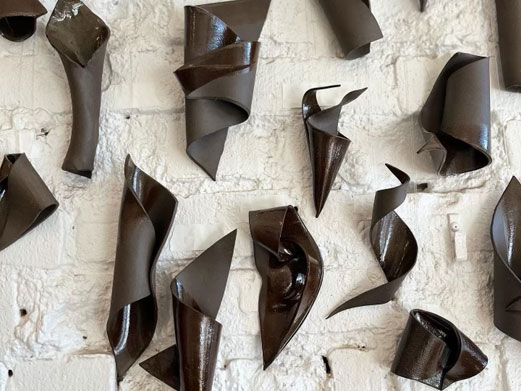
“On an artistic and personal level, I’m interested in what it means to “hold one’s shape” vs. changing to fit the expectations or conceptions of other people or societal norms” says Wendel, “the gestures emerged as a way of reflecting on those undulations—opening and closing oneself to the world, navigating constriction and freedom—both in regards to the pandemic and my own personal journey.”
Each small piece can be appreciated as a single, stand alone object as well as be arranged in many configurations in relation to other pieces, reminding us that the outline of the collective is both formed by and contains the individual.
Further along the wall is her Focail Farraige series. Several abstract forms serve as an ode to how language reflects the connection a culture has with its environment. Each piece is based on an old Irish word that relates to the sea. This is made all the more poignant by the fact that the Irish language, though taught in schools throughout Ireland, is not widely spoken and thus falling out of use. “The fact that the people who spoke and lived in this language were so observant and connected to nature to have evolved this incredibly specific and (in my opinion) beautiful language makes me want to slow down and tune into my senses and experience of the natural world around me.”
While considering how language acts as a filter of our experience, Wendel began to ask herself “what small phenomenon am I bustling past? What happens when you quiet down long enough to tune into something as specific as water pulling at pebbles on the shore at night? How does that change your relationship to the natural world and your place within it?”
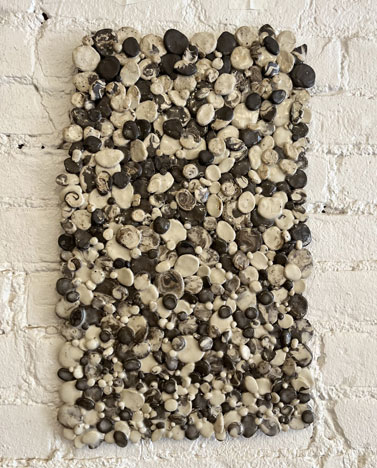
Wendel has Irish roots and grew up listening to her grandfather talk about his Irish family and traditions. But her relationship with Ireland really took hold when she began spending every summer helping at a family friend's Bed and Breakfast on Sherkin Island, off the coast of Baltimore in County Cork.
“When not making pancakes or putting laundry on the line, I would go on epicly long walks and really lose myself (or find myself more accurately) in nature. There’s a wildness that is allowed to breathe there and a magic that can transform you if you open yourself to it. The experiences I was having in Ireland did not easily translate to English, and so I turned to Irish songs and then to picking up bits of the language and folklore.”
Through her research Wendel found the book Thirty-Two Words for Fieldwork by Manchán Magan, an Irish writer and documentary filmmaker, particularly inspiring. “One of the points he makes in this book is that it's worthwhile to remember not just the simplest, most streamlined definition of a word, but its deeper connections to mythology, history, and culture.”
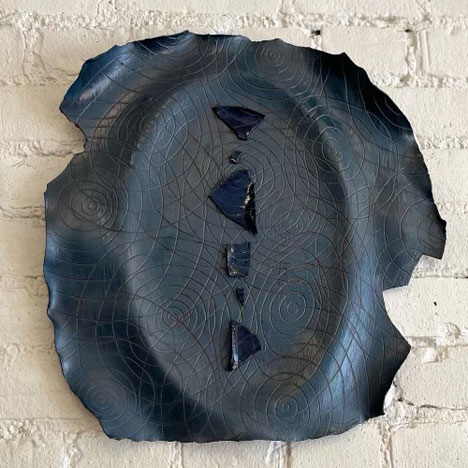
A few of Wendel’s pieces are based on the following:
Suaitiú: The sound of the ocean pulling at pebbles on the shoreline at night.
Calm Leaidí: A sea smooth as a plate, so rare as to be called Leaidí, a term of affection.
Tine Shionnaigh - Literally means “fox fire.” A term for bioluminescence seen in the ocean on dark nights.
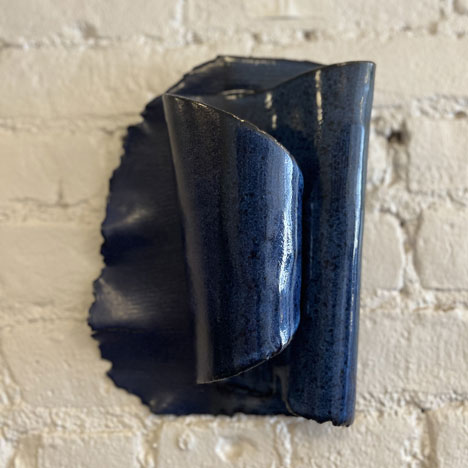
Often language can be a limited form of expression, difficult to or falling short of capturing the essence and experience of our thoughts and lives, however, Wendel understands these words to be “a window not only into the language, but of the world perspective that it holds.” Creating physical forms to capture the feelings and ideas behind them serves as another window through which we can open ourselves to a new language and perspective, one that starts from the senses.
Wendel found her way to ceramics after creating her own “DIY MFA” by taking advantage of the many classes and workshops taught by working artists here in New York. “I took classes in anything that even remotely piqued my interest—encaustic wax techniques, screen printing, oil painting, acrylic painting, collage, mixed media…” While learning much and appreciating the cross-discipline experiences, Wendel still felt like she was searching for her medium, “I wanted an artistic home. I wanted to fall in love.” Things clicked for her once she took a ceramics class offered through the Educational Alliance at the Manny Cantor Center, “I was pretty instantly hooked…I loved the organic nature of the material, the patience and humility required of the firing and glazing process, and the recyclable nature of clay that allows for experimentation.”
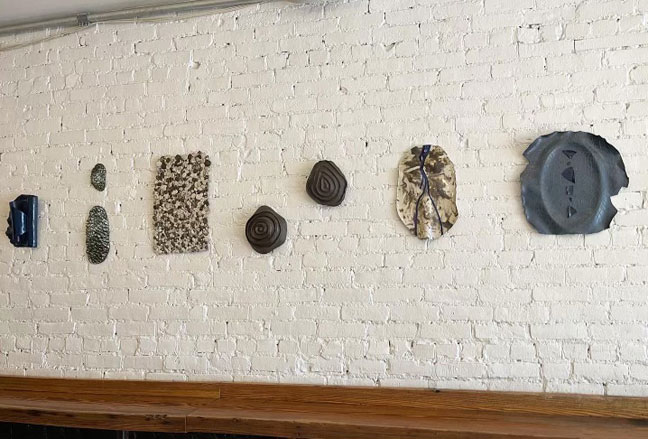
In each series, we are presented with contradicting elements highlighted through the use of clay; the abstract and the tangible, the pliable and the static, idea and object. Wendel’s pieces are all hand built and skillfully utilizes clay’s inherent duality of softness and rigidity to create tension within the work; making something still appear in motion, something fluid fixed. “As I've developed my handbuilding practice, other mediums I've worked in have certainly come into my pieces, particularly welding. When working with metal, I always wanted to “pervert” the medium – make something hard and rigid appear fluid and weightless. I like stretching clay in similar ways – seeing how far I can push its limitations.”
Throughout her work we see a grappling with the complex relationship between language and perception, our relationship to nature, and shape given to the invisible forces that inform our way of being. There is the notion of someone looking, listening and feeling closely to their surroundings in her practice. “My favorite definition of an artist,” Wendel says, “is ‘someone who pays attention.’ It just sounds like a great way to walk through life: paying attention to the details, moments, emotions that you might otherwise miss. I try to bring that practice to clay.”
- Marisa Malone
•
Sigrid Wendel spent her earliest years living on a flotilla of boats and barges in the California Delta before moving to the woodlands of Western Massachusetts. She studied political science and visual art at Yale University and has lived in the East Village for ten years, where she is currently working on several visual and written creative projects, primarily in the mediums of clay and flash fiction.
More of Wendel’s work can be found on her website: Sigrid Wendel Ceramics.
Marisa Malone grew up in the Sierra foothills of Nevada. She studied writing and literature at The Evergreen State College and currently lives in Brooklyn, NY. Her writing has been published in BlazeVox Journal and Selfish Magazine, along with two self-published poetry chapbooks.
•
Words + Images: Sigrid Wendel is on view through February 3, 2023 at at the Adjacent To Life gallery housed in Ninth Street Espresso (341 E. 10th Street at Ave B, New York City).
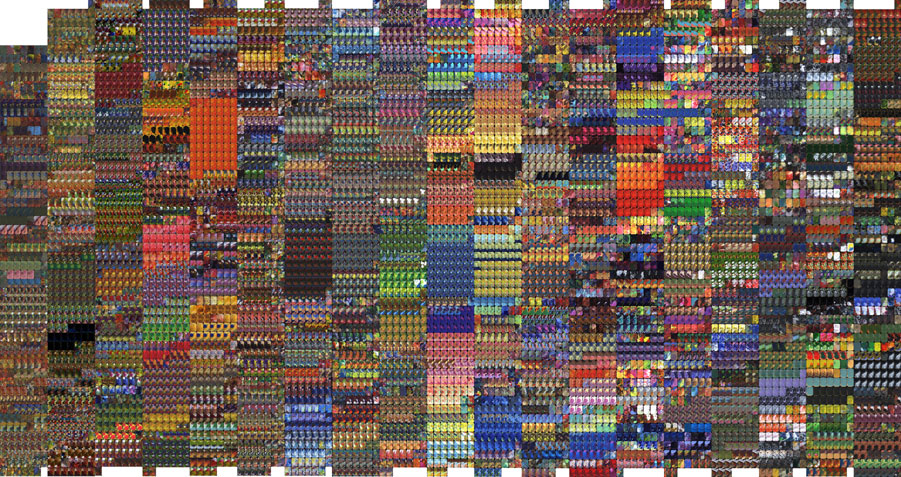
State of acrylic palette at the conclusion of every day from Feb 1, 2004 through Dec. 31, 2022.